Everything You Should Know Before Starting a SaaS Business
Even if you are unfamiliar with the nuances of SaaS as a software development paradigm, you are undoubtedly exposed to such services on a daily basis. Dropbox, Google G Suite, Windows Azure, and Salesforce are some of the most well-known software as a service examples. This category also includes smaller apps like Buffer and Hubspot.
The SaaS market has been steadily expanding, and this trend is expected to continue. The market is expected to be worth $60 billion in 2023, according to Technavio. It’s one of the fastest-growing fields of technology, with a growth rate of 9%.
What is SaaS business model?
Software as a service (SaaS) is a platform that may be accessed through a web browser and stored in the cloud. Users do not need to download the app on their computers; instead, they must create personal accounts and pay monthly membership fees.
SaaS is device-independent because it is computed on the cloud. Users can use any laptop or smartphone to access your solution as long as they have an Internet connection. The SaaS business model fits well in with the expanding trends of remote work and multitasking.
How does the SaaS business model work?
Storage and computing power are provided by third-party Cloud vendors for SaaS enterprises. A SaaS web application is deployed to the server using services like Google Cloud and AWS. Companies do not need to purchase their own servers or host the program on their users’ local networks; instead, they rely on a network of foreign servers.
One thing to keep in mind with SaaS is that its distributed computing model leads to increased speed and security. There isn’t a single storage system that isn’t a target for cybercriminals. Even if one server has a power outage or is experiencing latency issues, servers on the other side of the world are likely to be fine.
All that’s left now is to examine how users interact with SaaS; let’s start with the basic process and monetization.
- Users access SaaS from their browser. If the site has a mobile version, it can also use smartphones.
- A user creates an account that will connect to software services, store progress, and personal information. As long as visitors remember logins and passwords, they can enter the website from any device.
- Users upgrade their plan to premium or full one. Many SaaS tools offer a free program or a trial version, giving visitors a chance to try out the functionality. After the trial period ended, users decide if they want to upgrade.
- The subscription fee is paid every month. Think about Netflix – users don’t pay for each piece of content. The service withdraws a monthly payment on a regular basis.
Advantages of SaaS
The SaaS model’s popularity stems from the fact that it provides numerous compelling benefits to both business owners and users. Customers will find SaaS to be far more convenient and independent than an on-premise software. Furthermore, purchasing a membership for a few dozens of dollars is less expensive than purchasing software for hundreds of dollars.
Business owners have their reasons to prefer SaaS over traditional on-premise apps.
Stable revenue
The key benefit of developing software as a service is that you may generate long-term revenue. With SaaS, even thousands of regular paying users can be enough to support a large crew and secure consistent revenues. 1000 purchases of on-premise software will only get you by in the short run.
Long-term investment is defined by SaaS. If the company succeeds in attracting loyal customers, they will pay for a membership for months, if not years.
High customer retention
Users and company owners are encouraged to form long-term relationships with SaaS. The team seeks to keep visitors from quitting their subscriptions by increasing their loyalty. Users aren’t finished with their evaluations either. Each visitor is constantly evaluating whether the platform is still worthwhile.
Purchasing on-premise software is a done deal, but signing up for SaaS is a conversation that continues. You can build a loyal community if you know how to meet people’ expectations and offer fresh updates on time. Many of them can become brand ambassadors for your product and help spread the word.
Consistent business processes
You may constantly produce and publish new updates with SaaS. Multiple product versions can be deployed in a short period of time, and most users will have no problems with it. On the other hand, upgrading on-premises is a pain in the neck – the upgrade may be too large, and users are typically dubious. Users frequently refuse to install new versions of your tool, making it impossible to enhance it.
You have complete control over the quality and positioning of your product with SaaS. You may modify the UI, add new features and specialties, and pivot at any time to improve functionality. It’s a lot easier to provide a better product to your users when you have control over the network, as you do with Cloud computing.
Different types of SaaS business models
You may not have noticed, but it’s probable that you’ve utilized different forms of SaaS without realizing the differences. Even though all SaaS companies follow the same basic principles, their approaches to lead conversion and pricing are typically quite diverse. Based on their client acquisition techniques and monetization algorithms, we examined the main categories of SaaS.
Two main types: low-touch and high-touch SaaS
If you look closely at all software as a service offerings, you’ll see that they cater to various types of clients. Some SaaS, such as AWS, cater to large organisations and businesses, while others focus on enticing a single user. Netflix, for example, does not view you as a business owner, but rather as an individual seeking new material.
These distinctions led to the formation of two main types of SaaS:
- High-touch SaaS – enterprise-level software as a service that aims to communicate its benefits to other companies and corporations. Such SaaS operates in B2B and usually have higher subscription prices while offering rich functionality and high computing power.
- Low-touch SaaS – person-oriented businesses that see users as individuals with personal needs. Such SaaS has narrower functions and occupies smaller niches. They don’t aim to deliver a set of instruments for running a company or creating a product, but rather, for a precise result.
High-touch SaaS focus on delivering “fishing rods,” getting businesses all the necessary instruments to create the result. Low-touch SaaS supply users with “fish” – tangible and clear results.
Marketing methods
Low-touch Advertising, social media marketing, and straightforward communication are all important in SaaS. Grammarly is a fantastic example. Its YouTube advertising focuses on users’ personal troubles and concerns, such as an employee writing a boss email, a student writing an essay, or a small business owner. All of these folks will use Grammarly for personal reasons rather than for business goals.
The quality of a deal takes precedence above the number of users in high-touch SaaS. A single sale here might be worth thousands of dollars, and the staff puts a lot of effort into pursuing each client. Preparing a thorough knowledge center, investing in a skilled and 24/7-available support crew, and establishing personal connections at conferences and workshops are usually the top priorities for high-touch SaaS. These platforms, in order to get recognition in their intended fields, frequently require expert endorsements.
Monetization strategies for SaaS
The target audience, user needs, and the company’s priorities all influence pricing structures for software-as-a-service. They are frequently blended, making it difficult to identify a specific method. We identified the following sorts of business models after researching dozens of large and small SaaS.
Per-user model
This is a common approach for high-touch SaaS companies that customize their solutions to specific teams and businesses. The higher the price of the membership, the more users can use their tool. Shopify makes use of such a mechanism. The team subscription is a premium plan that is several times more expensive than the standard plan. The more people that utilize the program, the more it costs.
Pricing for features
In SaaS, this is the most prevalent monetization technique. Users who pay for a premium membership gain access to a certain service. Each plan provides access to a set of features. The higher the cost of the plan, the more options there are.
InVision, a UI/UX design tool, uses this price mechanism. Working with one prototype is allowed under the free plan. The beginning pack increases the maximum number of projects to three, whereas the ultimate Team trial allows you to work on an unlimited number of prototypes.
Freemium model
The Freemium model is frequently used in conjunction with other pricing structures, such as per-user or per-feature charging. Users can sample the product’s free version first and then upgrade to the premium version if they want. The trial period may have a time limit, however the free plan can often be utilized interchangeably.
Grammarly, an English spelling checker, took this approach. The free version can be utilized for an unlimited period of time while still accomplishing its core goal. Additional capabilities include checking writing quality, clarity, tone of voice, and more in the premium edition.
Pay-per-use
For high-level SaaS and infrastructure as a service, this is a traditional model. Users are only charged for the server space that they use with AWS, Google Cloud, and IBM. Pricing is based on the amount of CPU power consumed and the number of requests per second.
A business plan like this lowers the barrier to entry for users. They may rest confident that the organization would not overcharge them for their services. Users are more independent in this way since they can take a break from using the software and return to it at any moment. As a result, pay-per-use pricing schemes result in greater user retention.
Pricing on the active-user basis
When a SaaS is designed for complete teams, the logical question is whether business owners should pay for users who only use the product occasionally. To address these concerns, several businesses employ a hybrid pay-per-use/pay-per-user approach. Members who are actively utilizing the software are the only ones who need to pay. The account will not be invoiced if a team member stops using the tool.
The disadvantage of this paradigm is that it is more difficult to quantify and predict. Determining whether or not a user is active, as well as establishing activity metrics, necessitates in-depth study and direct conversations with software users. This model’s error margin has the potential to be extremely large.
Stages of SaaS business model maturity
The primary business factors of deploying SaaS as a business model have already been explored, which come down to determining your niche, target audience, and pricing strategy. The next step is to examine the project’s technical features.
To define expectations for each stage of SaaS development and support, let’s draw out the journey.
Level 1 – Generalized
The program has a lot in common with on-premise applications. Standard functionality is provided by the service, which is usually the same for every use. The user experience is similar to that of social media platforms. The ability to release real-time updates and personalize functionality does not benefit providers.
The first stage of SaaS development is to create a simple solution with fundamental functionality while considering the SaaS business model. However, customers are still unable to enjoy all of the major benefits of utilizing software as a service.
Level 2: Configuration
At this point, each user has their own version of the SaaS hosted by the vendor. Each instant is tailored to a single user. Customers can add new functionality (download integrations), establish preferences, and receive real-time updates using the vendor’s in-depth personalization options. Vendors and users are already benefiting greatly from online upgrades and real-time improvements at this point. On-premise services get increasingly sophisticated as SaaS tools become more complex.
Consider working on personalization and customization capabilities if you’re converting an on-premise tool to a SaaS. Developers usually re-architect the functionality and interface to accommodate varied scenarios for each user. Personalization is a significant benefit of SaaS, and you should take use of it.
Level 3: Lowering the cost
By adding information to each personalized feature set, SaaS companies may better manage instances. Each user’s data is safeguarded by security regulations and algorithms that prevent data from being mixed together. Meta-tags make it easier to find needed instances and save money on server fees.
Level 4 – Scalability
If software as a service had to handle all instances separately in prior stages, slowing down performance, the vendor is now returning to storing cases together at this level. This is not, however, a return to stage one; by this time, information has already been specified with individualized meta-tags that give unique features to certain users.
This allows a SaaS to easily handle thousands, if not millions, of customers while also allowing the business owner to reduce the amount of services used and swiftly roll out new product connections. Data is stored in load-balance groups, which enhances efficiency, while meta-tags ensure that the user experience does not deteriorate.
Which level of maturity is the best?
It’s difficult to strike a balance between data sharing and data security. Determine the features you want to personalize and what information you’ll need before you begin construction. It will assist you in determining which instances should be treated individually and which can be handled as a group load.
Although level 4 is the ideal goal, certain SaaS may not require such a high level of personalization. Depending on your functionality and resources, you can adjust the amount of shared and individual data.
How to develop a SaaS?
Here’s a checklist for SaaS development, from the research stage to the final execution. Let’s go over each step and underline the critical requirements for each of them.
Find a niche
Defining your SaaS specialty is the first stage in SaaS development. CRM, project management, software infrastructure, development, testing, communication, and digital marketing are the most typical industries for software as a service. Other fields, however, can be made into SaaS, but the bulk are related to marketing and technology.
Define your positioning, market, competitors
After you’ve determined the industry in which you want to work, research existing SaaS and explain them in the same way that we did with Shopify, HubSpot, Slack, and others. Keep an eye on their logo, pricing, functionality, and marketing plan.
Identify tech stack
Because the functionality and interface are accessed through online browsers, most SaaS leverage the web tech stack. Typically, this includes front-end JavaScript and back-end Java, Python, Go, or PHP. Because of its speed and efficiency, Ruby on Rails is preferred by some teams.
Some SaaS, on the other hand, are primarily available as desktop applications, and some can even be installed directly on the device. Adobe, Microsoft Office, and Slack are the most common examples. If your product is frequently installed on a desktop, you might want to use a desktop tech stack, such as C# or C++.
If your SaaS requires heavy data processing, consider using Python – a go-to language for machine learning and big data.
Choose a pricing strategy
You need to define your monetization model – you can choose one of the described ones or opt for a mixed version. Also, think about what payment systems and integrations to implement (you can explore ready solutions like Paypal, Stripe, and others).
Assemble a SaaS development team
SaaS is a long-term project that necessitates experience in developing, testing, and managing software-as-a-service from your technical team. SaaS design necessitates stringent security, deployment, and active data processing techniques. The team must be capable of integrating third-party tools, linking tools to third-party APIs, and customizing a product to various platforms (web, desktop, mobile).
So, the list of must-have skills includes:
- Cross-platform development: mobile, desktop, web, cross-browser development;
- Data security (encryption and understanding regulations);
- Data processing and storage: SaaS should quickly process user request and provide fast performance;
- Software testing and maintenance: developers need to cooperate with QA and maintenance teams because SaaS is changing, and the risk of introducing new functionality issues is constant.
- Documentation. Make sure that the team knows how to communicate their development and testing practices – comprehensive documentation helps avoid tech debt and remove bugs quickly.
Release a product
To bring a finished product to market, you must devise a release strategy. Customer support, success management, and services are all part of the Software as a Service business model, which is focused on personalization. To provide tailored services, you must plan ahead of time to assist consumers and provide them with ready-to-use content.
Here’s a checklist of things to think about before releasing your SaaS to the public.
- Figure out how many times you want to release a new version of the product. If your changes are too frequent, your stakeholders will interpret this as the lack of product stability, and users will likely be unable to get used to the product’s interface and functionality. On the other hand, too rare updates leave you vulnerable to security issues and behind market trends.
- Assign a particular date: when the team knows that you release every week, every two weeks, or each month, they can plan their workload.
- Make previews: your team and beta-testing users should be the first ones to test out the new release before the entire audience sees it.
- Plan release with all involved teams. Your designers, testers, and developers should communicate and voice their opinions on dates and frequencies of releases.
It takes a team to bring a SaaS to market; you must listen to your stakeholders, consumers, developers, testers, and designers. Before releasing the product, make sure you have all of the marketing materials and instructional content ready. You’ll need a marketing and content-marketing strategy to assist your SaaS reach its target audience.


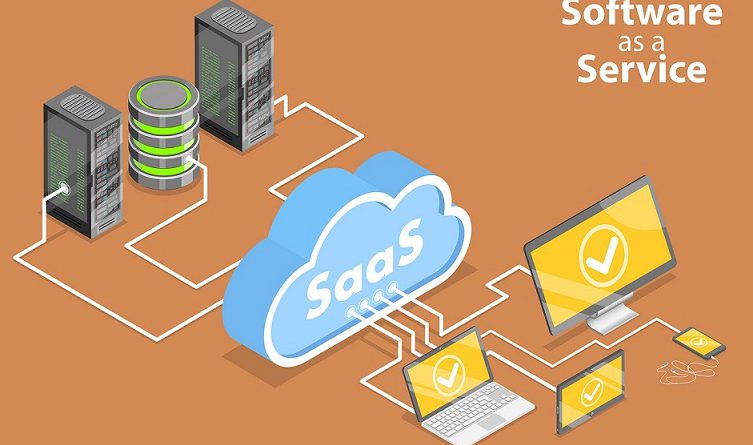
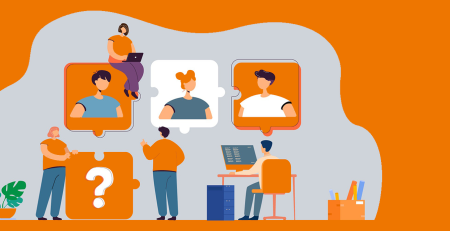
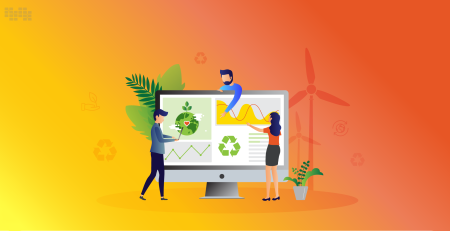
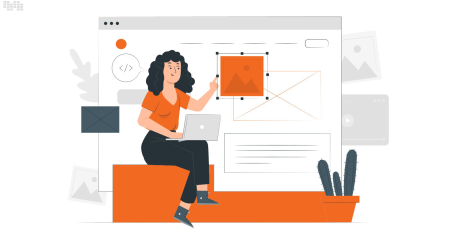
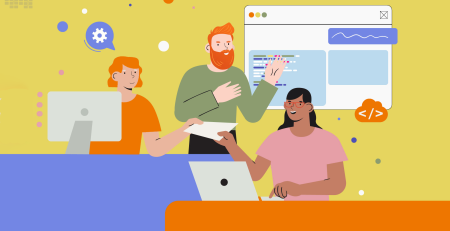

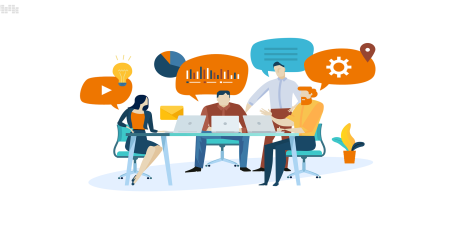

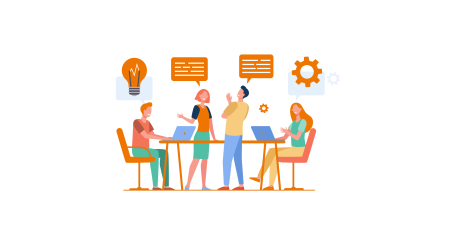
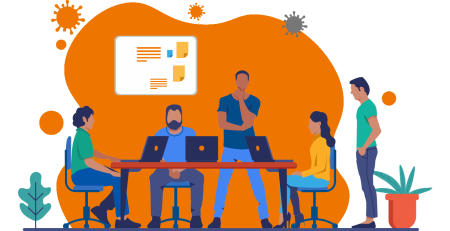
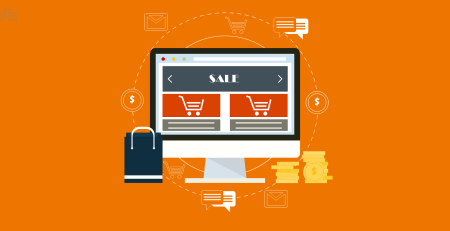
Comments (6)
great points altogether, you simply received a new reader.
Greetings from Colorado! I’m bored to tears at work so I decided to browse your website on my iphone during lunch break. I really like the knowledge you present here and can’t wait to take a look when I get home. I’m surprised at how quick your blog loaded on my phone .. I’m not even using WIFI, just 3G .. Anyways, excellent blog!
Good post. I am facing a few of these issues as well..
you are in point of fact a good webmaster. The site loading speed is amazing. It seems that you’re doing any distinctive trick. Furthermore, The contents are masterpiece. you’ve performed a excellent process in this topic!
Howdy! This article couldn’t be written any better! Looking through this post reminds me of my previous roommate! He constantly kept preaching about this. I most certainly will forward this information to him. Pretty sure he’ll have a great read. Thanks for sharing!
Very energetic article, I loved that bit. Will there be a part 2?